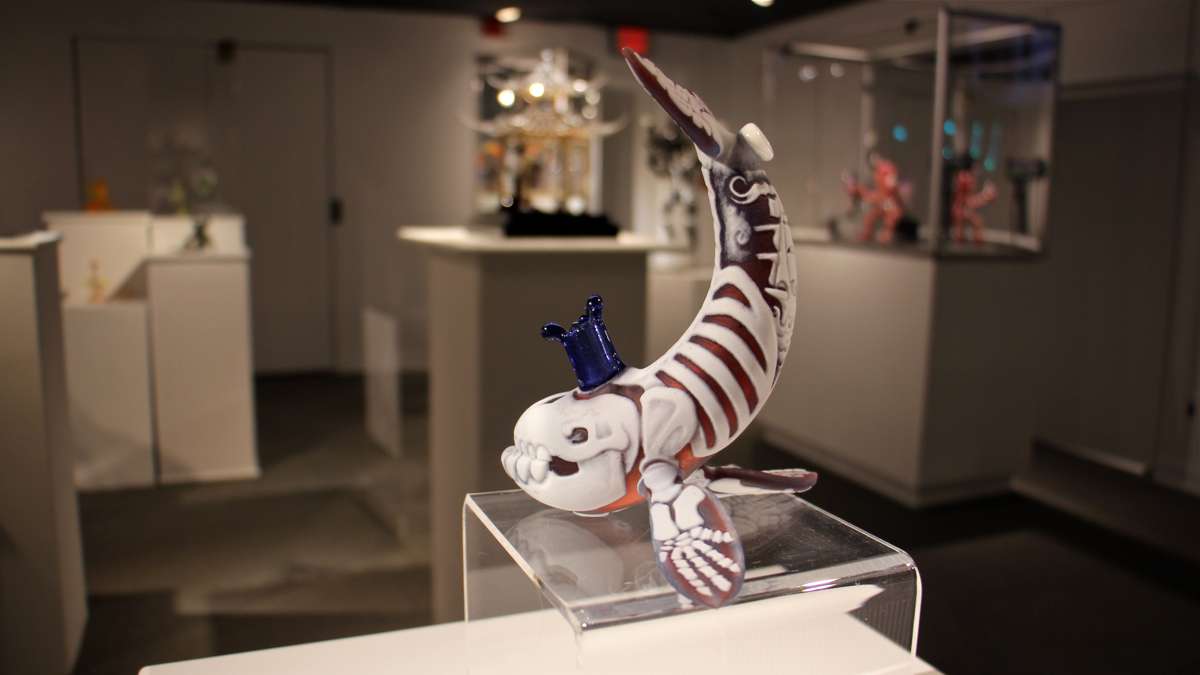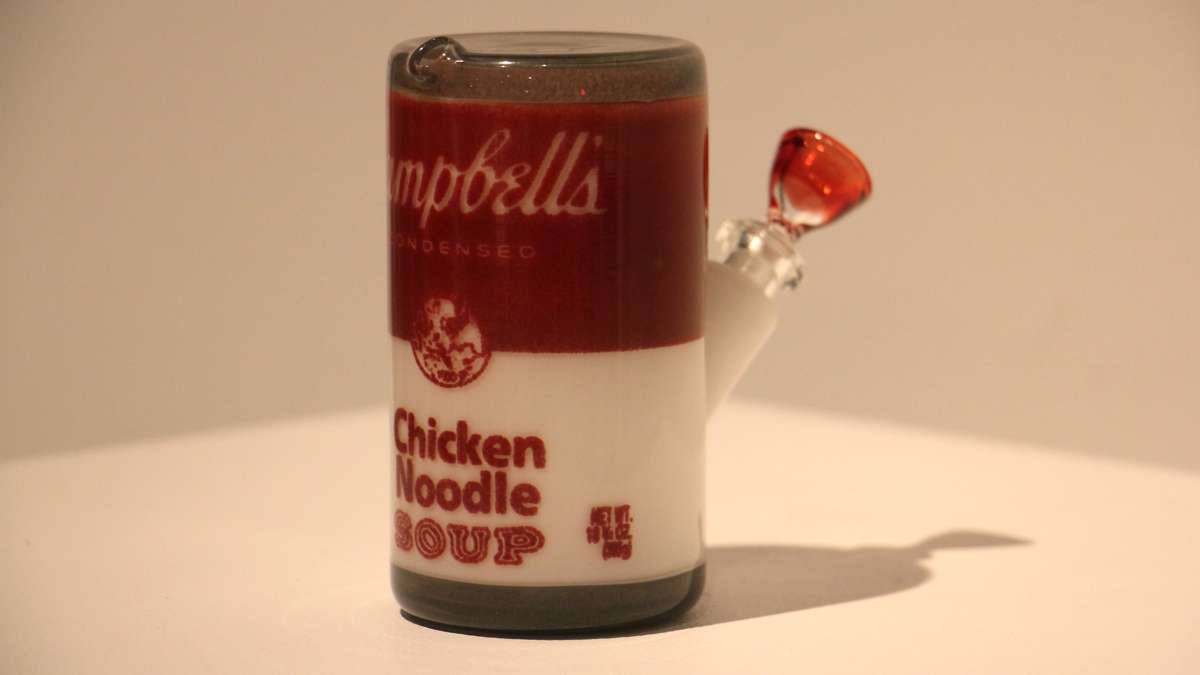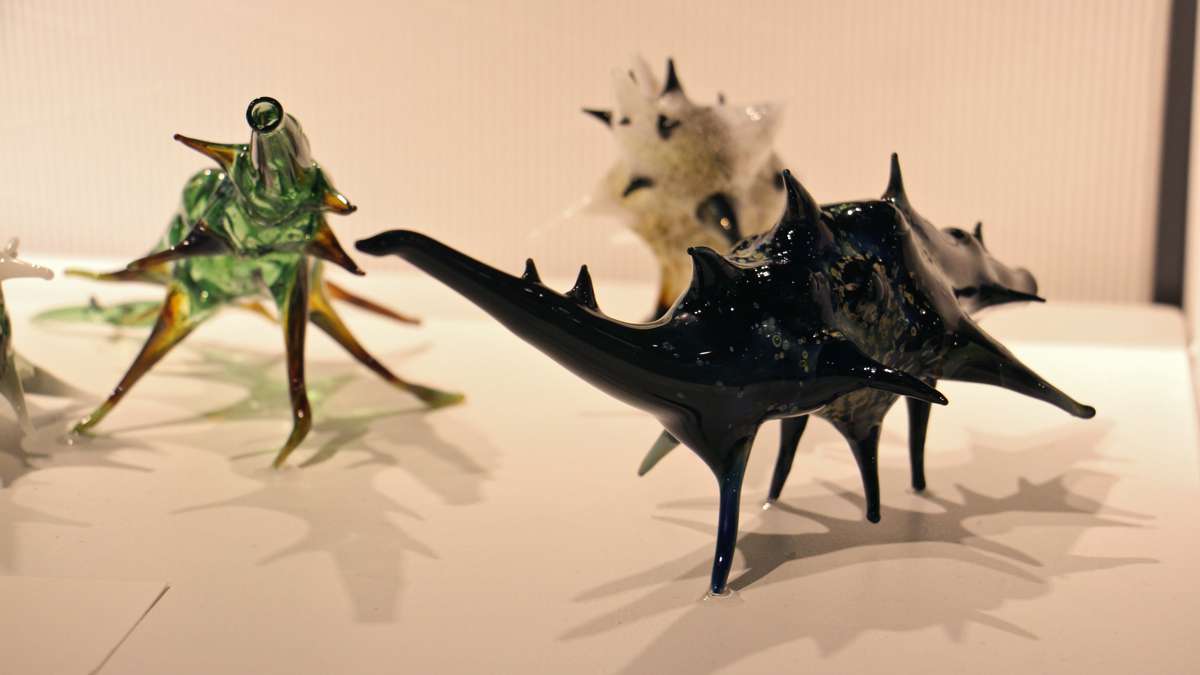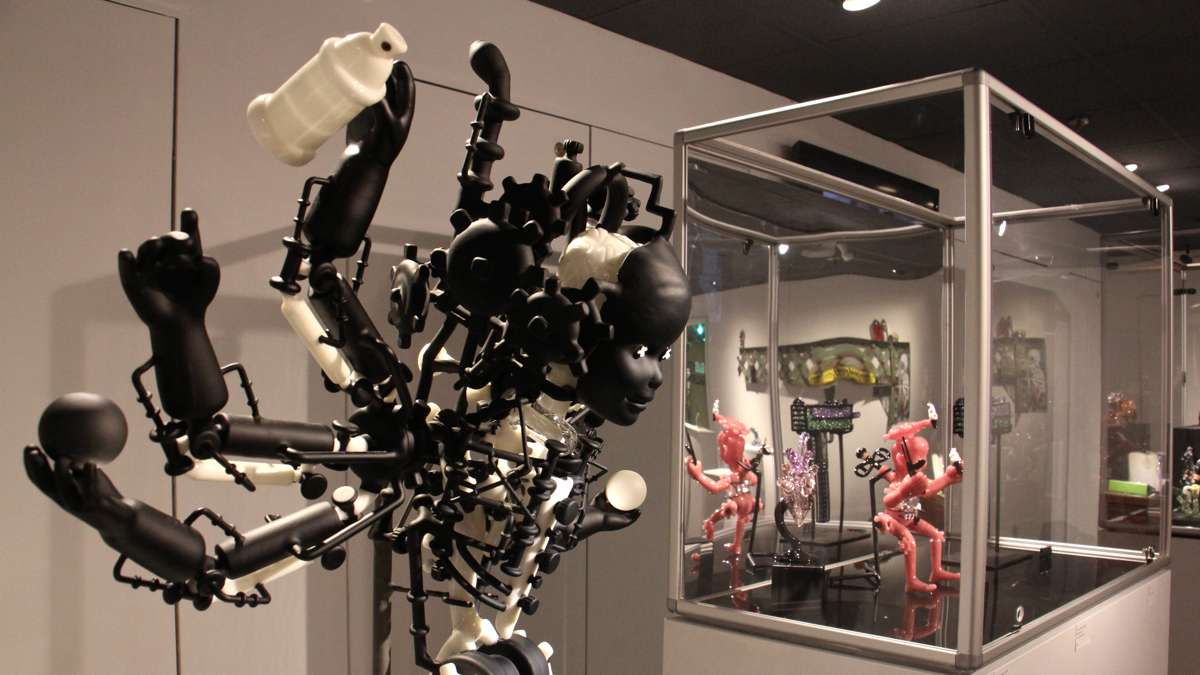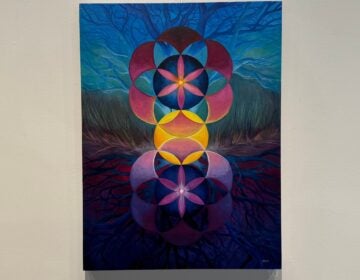Museum challenges us to think of bongs as fine art
ListenThe National Liberty Museum in Philadelphia’s Old City neighborhood is a private museum with somewhat unusual mix of exhibitions about American heroism, democratic values, and glass.
Its newly expanded gallery space is literally underground; it’s inaugural exhibition features an illicit art movement: glass water pipes.
To some, they are the most elaborately designed bongs ever seen.
Once associated with the parking lot of Grateful Dead shows, glass pipes have begun knocking on the door of fine art. The pieces display a technical mastery and visionary imagination. Some are made to heighten a ritualistic spirituality, which a smoker might be seeking.
“To really have this intimate experience with the person who is going to be using these items, or collecting these items, has heightened the culture a lot,” said the museum’s coordinator of glass, Holly Smith. “That’s why you’re seeing these items as art, rather than just a bong.”
The 50 sculptural pieces in “The Treachery of Images” (all priced for sale) are meant to be artworks – some going for tens and hundreds of thousands of dollars – but they all can function as pipes. “Frieja,” by an artist that goes by the name Banjo, is a glass pipe sculpted with a techno-pagan goddess sitting in lotus position against a halo of rainbow-colored flames. The piece is priced at $250,000.
Twenty-five artists submitted work, most of them local to the Philadelphia region. Some are identified only by aliases: Slinger, JOP!, Rooster, Germ — if these sound like graffiti tags, it’s because they were once illegal artists. At one time America’s War on Drugs was going after not just dealers but crafters of drug paraphernalia.
Only recently have these artists emerged from underground and, like graffiti artists, they are reaching for the brass ring.
“They’re excited. They’ve been waiting,” said Meegan Coll, the museum’s director of glass. “They have not been exposed to a mainstream audience, or recognized by an institution rather than a shop on the streets.”
The art world has had a long, ongoing conversation about what is consider art, and what is considered craft, and is the difference? But even in that debate, bongs are outliers. Both sides treat glass pipes with disdain.
“The glass-blowing world doesn’t want to be associated with those things, and the crafters don’t want to be associated with those things,” said Smith. “So you have a clique within a clique within a clique.”
Glass pipe sculpture may be the red-headed stepchild of the art world, but it pays the bills. In a statement by one of the artists on display, Elizabeth Heikka-Huber, wrote that the income from selling glass pipes allowed her to pursue her career in fine-art glass.
“After nearly three years in glass school, I had to start making money to support my family and this was my only way,” wrote Heikka-Huber. “I am so happy that glass has sustained my livelihood full time for 19 years.”
WHYY is your source for fact-based, in-depth journalism and information. As a nonprofit organization, we rely on financial support from readers like you. Please give today.









